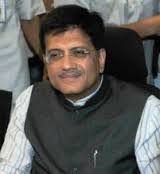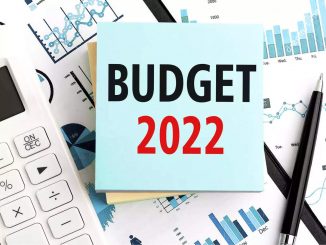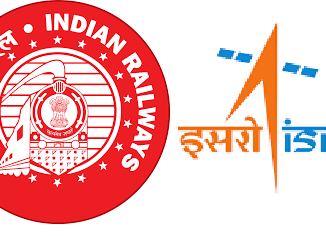
Agendra Kumar has been associated with Esri India since 2013. An industry veteran with over three decades of experience in the IT industry, Agendra has been promoting the use of geospatial technologies in the country. Under his leadership, Esri India has partnered with various government and private organizations to execute critical and transformative projects using Esri’s GIS (Geographic Information System) technology and here is where we come in to discuss the use and future of GIS in India with our Editor- Saurabh Sinha.
Agendra is also the President of the Association of Geospatial Industries (AGI). Before joining Esri India, Agendra was the Managing Director of Silicon Graphics in India and prior to that he was the Managing Director of Veritas India and upon its merger with Symantec Corporation took on global account management responsibilities for Asia Pacific and Japan region.
Saurabh || Since 70% of Esri India’s clients are government, how are you helping government in better decision making? Please mention some names/ use cases.
Agendra || Government departments – at centre, state and municipal (ULB) level have been using GIS for many decades. What started with simple GIS applications, with limited access across specialized departments only, has today matured to advanced geo-enabled decision support systems that power major mission programssuch as Digital India, Smart Cities, Sagarmala, Bharatmala and Namami Gange, e-governance initiatives, sustainability goals and policy decisions.
National mapping organizations such as Survey of India (SOI), Geological Survey of India (GSI), National Atlas and Thematic Mapping Organisation (NATMO), Registrar General of India (RGI), Forest Survey of India (FSI) and NIC today use Esri ArcGIS for enterprise production mapping.
More than 40 smart cities are using Esri ArcGIS for planning, implementation and maintenance of urban areas, mobility solutions, utilities, asset management and improvement in their financial resources. For example: Varanasi Smart City has integrated IoT and sensors for dealing with issues of waste collection, parking management, automated street lighting etc. and to capitalize on the real-time location intelligence for enhanced decision-support system, improved collaboration, and rapid emergency response.
GIS technology is extensively used by government agencies to map and analyse various environmental changes like rising sea levels, land, and forest cover, changing habitats, etc. Several organizations under The Ministry of Environment and Forests, and many state forest departments are leveraging Esri ArcGIS to improve forest management with our solutions for data collection, mapping analytics, and remote sensing.

In disaster management, the use of GIS forms the core of all decisions from preparedness to recovery – identifying likely areas to be affected, evacuation planning, shelters, rehabilitation plans and more. Recently, before Cyclone Yaas made itslandfall on the eastern coast of India, a live GIS-enabled map application, released by us with our cloud offering – ArcGIS Online, provided critical information like movement of cyclone, likely path and expected wind speed etc.. More than 200,000 people downloaded this map within two days, making it one of the most used GIS based app in recent times. 80+ agencies including smart cities (e.g., Varanasi), municipal corporations (e.g., GMDA, BBMP, MCGM), state departments (e.g., Haryana, Punjab, Rajasthan), NGOs and national agencies (e.g., NDMA) leveraged Esri’s GIS technology for understanding the spread of pandemic, making critical decisions, taking actions and observing the impact of the actions taken.
Saurabh || How GIS can help in ensuring effective e-governance, enabling government to provide a new level of service to both businesses and the public?
Agendra || Government departments at all levels capture and maintain various data (such as assets available, programs / projects / initiatives, about citizen and services being offered) which form the basis for variety of decision making such as public-private partnership initiatives, financial inclusion, citizen inclusion, property taxation,infrastructure,and urban development, and delivering citizen services.
The city of Kanpur has implemented ArcGIS based property tax collection system and has seen an increase in compliance and tax collections.States such as Rajasthan, Jharkhand, and Karnataka have implemented geospatial infrastructure at state level which powers many of their governance programs. Rajasthan Government has also created an app using GIS to provide benefits to citizens and avoid duplication while extending government aid or other facilities to them. Here, GIS enabled a fair implementation of government services and distribution of benefits at the family level too.

Cities such as Gurugram and Greater Mumbai have created GIS based portals or hubs where citizens can find authoritative data related to different citizen servicese.g., their ward information or COVID-19 vaccination centres nearby. Citizens can report incidents like potholes, illegal constructions, garbage / sewer overflow withtheir location, photosusing GIS apps that notify relevant departments to action it immediately and keep citizens updated on the grievance status.
Airport Authority of India has automated the process of issuing the no-objection certificate for approval of building height andconstruction activities near the airport area. The overall approval process which used to take months earlier now takes a few days with minimal human intervention.
Department of Financial Services (DFS) has implemented a GIS based solution to easily locate the financial services like ATM’s, Bank Mitra, Bank branches and Post Offices which are the key touch points for financial inclusion.
With this data, DFS has been able to identify the list of covered and uncovered areas for them to prioritise the coverage initiatives.
Saurabh ||Land is an essential resource, however managing land administration and land records is an extensive process. What are the common challenges faced in governing and managing land effectively?
Agendra || Considering the vast geographic spread of India, mapping and planning land management becomes difficult.Lack of proper land titles for verifying and validating accurate data and establishing authentic land ownership status are some of the challenges to the process of land administration. Outdated land records, unrecorded land transactions and manual measurements of land owing to displaced markings often make land management a mammoth task. Also, lack of transparency and process knowledge with landowners and the complexity of legal processes further discourages landowners to come forward with updated ownership details.Regular land measuring practices, availability of updated maps/spatial data, central database of land records, and technology penetration at the state land record level, are few other areas where we need immediate intervention.
Saurabh ||How can GIS technology help in better management of land information and records?
Agendra || Accurate and up-to-date land record information is imperative for transparency, driving rural & urban development, andidentifying monetization opportunities.However, creating and maintaining an effective land management system is a multifaceted process often managed by many disparate agencies, departments, and organizations. For e.g., land registrations department is responsible for registrations of ownership, revenue department collects revenue from the land and ULBs collect property tax from the same land. Separate GIS applications are being used to manage individual aspects of land records and to supportall the workflows of land management. Some of the application areasof GIS in land records management are:
Land Records Permits
Administrative Boundaries
Property Valuation
Easements
Land Acquisitions
Cadastral Mapping
Automating land records using GIS provides the data management tools for efficient maintenance of land records,maps, and data. Whether it is a parcel split or a more complex subdivision of a large tract into smaller residential plots with new rights-of-way, GIS includes the tools, workflow, error checking, version management, and historic rollback that make mapping and public records tasks quick and easy.
GIS improves data management by reducing data duplication and promotes distribution and public access to data via public portals bringing in more transparency.
Saurabh ||How can the government effectively leverage this technology to improve land information management, property valuation and analysis?
Agendra || Using the latest developments in GIS such as AI and ML techniques on satellite imagery and drone-based surveys can expedite the manual ground survey of the land parcels.Digitization of cadastral maps with the context of Continuously Operating Reference Stations (CORS) using mobile apps can further expedite ground truthing with the latest updates to land information.

Property tax is one of the most crucial revenue sources for ULBs. With clear mapping of properties, land use and facility details, the collection from property tax can be maximised which can be ploughed in for further development.
E.g.,Directorate of Registration & Stamp Revenue, Government of West Bengal used EsriArcGIS for making more informed decisions while assessing and checking the value of land plots, and to develop an automated market value calculation module to ensure efficient service delivery.Many states already have GIS based land management system such as State of Rajasthan and State of Odisha.For e.g.,Government of Odisha’s Industrial Portal for Land Use and Services (GOiPlus) is GIS based industrial land use and infrastructure information system that displays real time information with regards to all the industrial land available in the State.
Over the years, many transformational initiatives have been undertaken by the government to bridge the gaps in the land information system.
Digital India Land Records Modernization Programme (DILRMP) (Ministry of Rural Development) and Land Use Planning and Management (LUPM) Project (Ministry of Rural Development) have focussed on modernization of land records and integrated land use planning, respectively.
Survey of Villages Abadi and Mapping with Improvised Technology in Village Areas (SVAMITVA) programunder implementation by Ministry of Panchayati Raj is aimed at creating accurate rural land records. This would pave the way for using the property (farmland as well as residing land) as a financial asset by villagers for availing loans and other financial benefits. GIS is the core operational technology of this scheme.
National GIS-enabled Land Bank system launched last year is another positive and forward-looking initiative towards the transparent mechanism of land identification and procurement.With the launch of a national level GIS portal, 3,300 industrial parks across 31 states and UTs covering about 475,000-hectare land have been mapped. This enables investors toget real-time information about the availability of industrial land and resources, thus helping them make informed decisions.
An industry leader, Esri India is an end-to-end GIS solutions provider enabling customers to think and plan geographically to make timely, well informed, and mission-critical decisions. The company plays a key role in defining the adoption of the latest GIS technologies in the country.







Leave a Reply
You must be logged in to post a comment.